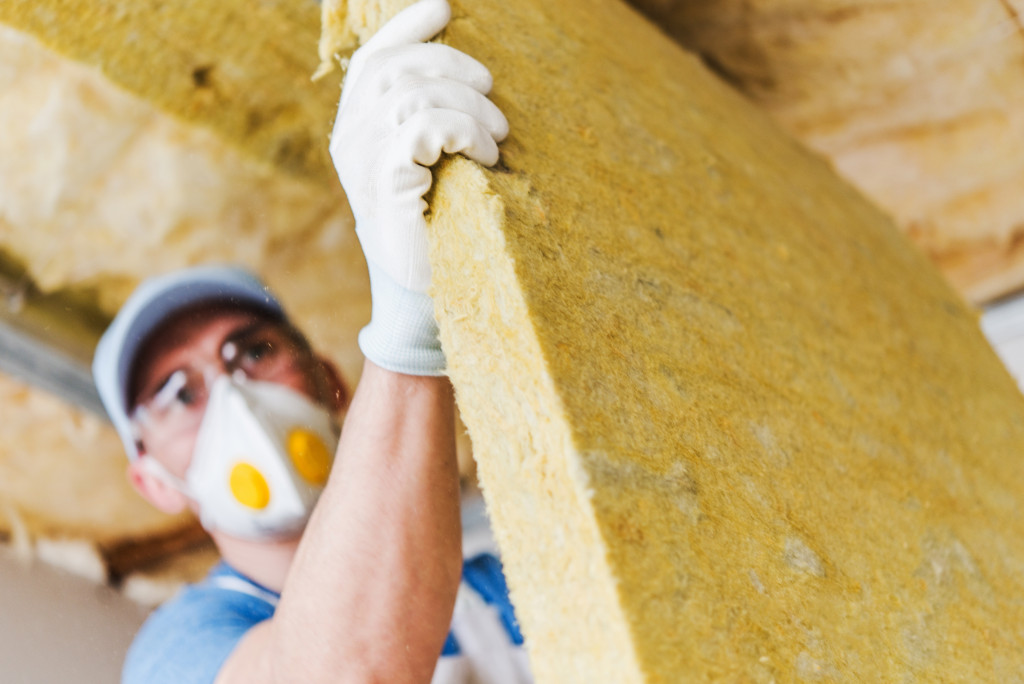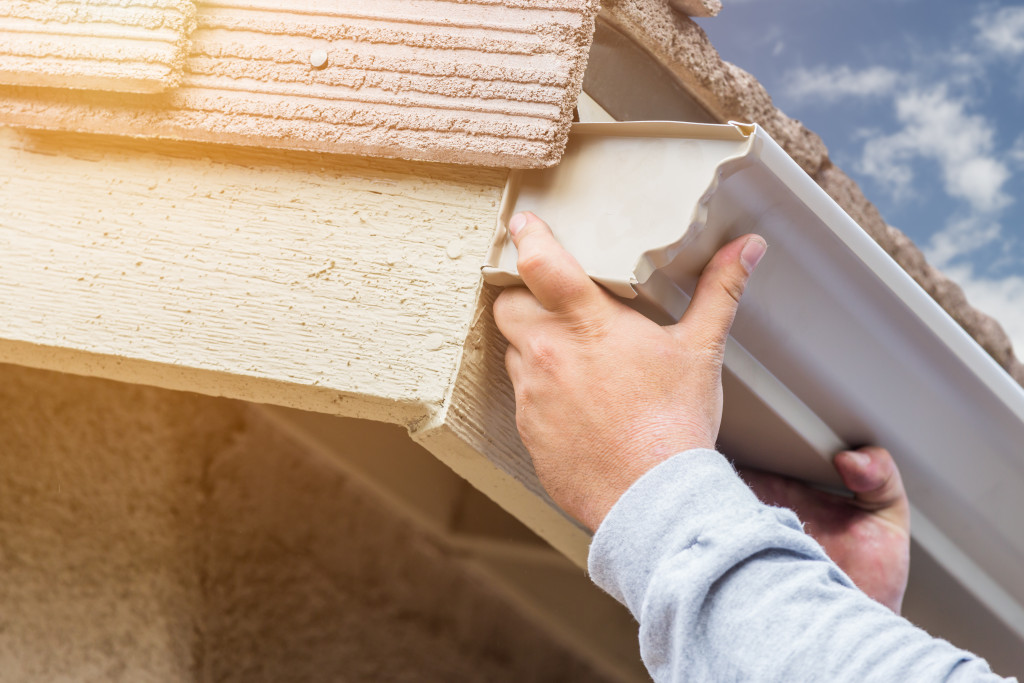- Understanding your local climate is crucial for choosing the right roofing materials and protective measures for weatherproofing your home.
- Regular roof inspections can help detect early signs of damage, allowing for timely repairs and extending the roof’s lifespan.
- Proper ventilation and insulation are key in maintaining a durable and efficient roof, regulating temperature, preventing moisture buildup, and reducing energy costs.
- Clean and well-maintained gutters direct rainwater away from the roof and house, preventing potential water damage.
Are you ready to take control of your home’s safety against unpredictable weather? Welcome to the ultimate roofing guide, your go-to resource for weatherproofing your home. This guide will walk you through all you need to know about securing your home’s roof against harsh weather conditions ensuring you and your loved ones remain safe, dry, and comfortable throughout the year.
Understand Your Climate
Before diving into the specifics of roof weatherproofing, it’s crucial to first understand your local climate and the unique challenges it may present to your home’s structure. Doing so can help you do the following:
Choose the Right Materials
When selecting the right materials for your roof, your local climate should play a key role in your decisions. For instance, asphalt shingles might be an excellent choice for colder climates due to their durability and ice resistance. In contrast, metal roofs can be ideal for areas prone to wildfires because of their fire-resistant qualities.
If you live in a tropical area, consider slate or tile roofs that withstand high winds and heavy rainstorms. Conversely, a green roof — covered in vegetation — can be a fantastic option for urban areas, as it can help to reduce your energy costs by providing excellent insulation. Always consult with a roofing professional to get a better understanding of the suitable material options for your specific climate.
Inspect Your Roof Regularly
Regular roof inspection is an essential aspect of home maintenance that is often overlooked. It’s advised to inspect your roof at least twice a year, specifically during fall and spring. Regular inspections enable you to promptly identify any indications of damage or wear, such as loose or missing shingles, sagging sections, or compromised flashing.
If you spot any of these signs, it’s important to address them promptly to avoid more significant issues down the line. Inspection isn’t just about the outer appearance; it’s also advisable to look inside your home for signs of leaks.
Damaged paint, discolored plasterboard, and peeling wallpaper indicate a leaky roof. Remember, catching problems early can save you from costly repairs and can extend the lifespan of your roof. Hiring a professional for your inspections can ensure all potential issues are identified and addressed properly.
Ensure Proper Ventilation
Proper ventilation is pivotal in maintaining the health and durability of your roof. It helps regulate temperature and moisture levels in the attic, preventing the buildup of heat or condensation that can lead to roof deterioration or mold growth. In the summer, a well-ventilated roof expels hot air from the attic, reducing your home’s cooling needs and energy costs.
In contrast, during the winter, it prevents warm, moist air from condensing on the underside of the roof, thus helping to avoid water damage. Ventilation systems generally involve a combination of intake vents installed in the lowest part of the roof (typically the soffits) and exhaust vents located at or near the roof’s peak.
This arrangement allows cool air to enter from the soffits, pushing the hot air up and out through the exhaust vents—a process known as natural convection. It is essential to consult with a roofing professional to ensure your roof is properly ventilated.
Invest in Good Insulation

Just as crucial as ventilation, good insulation is another key factor in maintaining a durable and efficient roof. Insulation helps keep your home’s internal temperature stable, reducing the demand for heating and cooling systems and thereby helping to lower your energy bills.
Moreover, good insulation can prevent the formation of ice dams in colder climates. Ice dams can cause severe damage to your roof and gutters, leading to costly repairs. Materials like fiberglass, cellulose, and foam are commonly used for insulation, and each has pros and cons.
It’s essential to consult with a roofing professional who can help determine the best insulation for your home, considering factors such as your local climate, roof structure, and budget. Remember, a well-insulated home is not just about comfort; it’s also about energy efficiency and roof longevity.
Maintain Your Gutters

Maintaining your gutters is another crucial step towards weatherproofing your home. Gutters are vital in directing rainwater away from your roof and house, preventing potential damage. Over time, gutters can become clogged with leaves and debris, resulting in water backup and potential damage to the roof.
It is crucial to regularly clean your gutters, especially during autumn when leaves are falling. This will help prevent leaks and water damage, ensuring the integrity of your roofing system. Moreover, inspect your gutters for any signs of damage, such as cracks, rust, or sagging, and replace any damaged sections promptly.
Installing gutter guards can also help prevent clogs and reduce the frequency of cleanings. Remember, a properly functioning gutter system is key to protecting your home from water damage and extending the lifespan of your roof.
Hire a Professional
Hiring a professional, especially a reputable asphalt roofer, is pivotal in weatherproofing your home. These professionals possess the necessary expertise and experience to assess your roofing needs accurately, decipher complex problems, and advise suitable solutions accordingly. A reputable asphalt roofer, in particular, can guide you through the intricacies of asphalt roofing, a widely preferred choice due to its durability and affordability.
They can help determine the right type of asphalt shingle for your specific climate and roof structure, install it correctly, and provide necessary maintenance tips to enhance its longevity. Always ensure to hire a licensed and insured roofer and seek references from previous customers to verify the quality of their work. Remember, a well-executed job by a reputable asphalt roofer can significantly increase your roof’s resilience against harsh weather conditions, safeguarding your home.
In conclusion, safeguarding your home against unpredictable weather conditions starts with a resilient roof. Don’t wait for the next storm to hit. Take control, act proactively, and engage a reputable professional to assess and enhance your roof’s durability. Protect your home now, and secure peace of mind for tomorrow.
